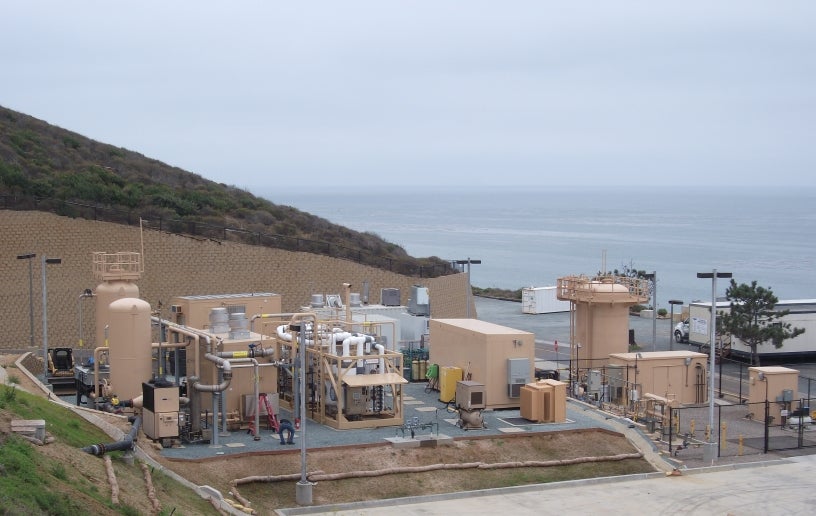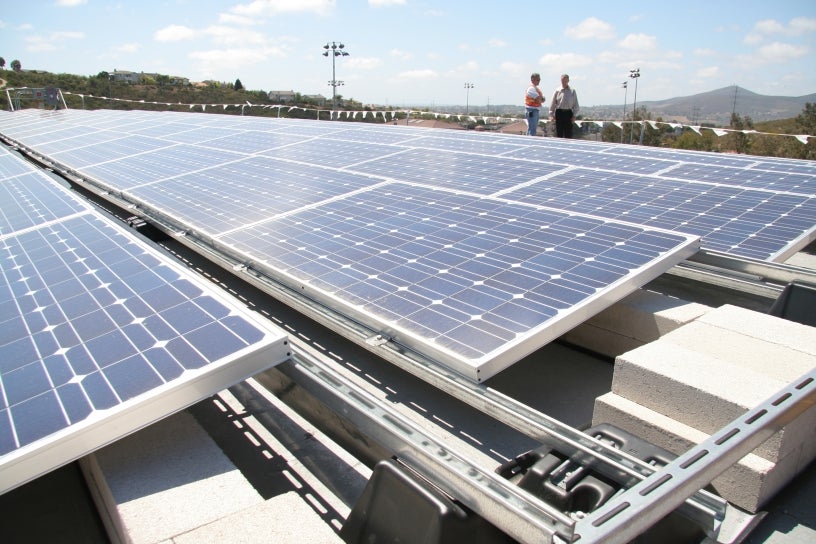Renewable Energy

The Public Utilities Department has a dynamic Renewable Energy Program that generates renewable energy to operate almost all its large facilities and an Energy Efficiency Program that looks to upgrade with innovative energy-efficient products. This impressive standing contributes to the department’s environmental stewardship, moves the City forward in energy independence, helps reduce operating costs and ultimately helps keep rates lower for customers.
In fact, some of the Public Utilities facilities not only produce enough energy to operate the facilities themselves but also put excess energy on the SDG&E grid to generate monetary credits on other selected facilities' bills. Public Utilities, along with private partners, uses a number of energy sources to generate energy, including digester gas, landfill gas, biomethane, solar and fuel cells.
This program is key to two of the five strategies of the City's Climate Action Plan: energy-efficient buildings and clean and renewable energy.
Methane
- One of the by-products of the wastewater treatment process is methane gas, which is collected at the Point Loma Wastewater Treatment Plant. The methane fuels two continuously running generators that can each produce up to 2,235 kilowatts of electricity. Using the methane produced on-site, the Point Loma plant has not only become energy self-sufficient, it is also able to put excess power it generates to the utility energy grid and receives credits on other Public Utilities selected facility's energy bills. Thermal energy produced by the generators is used to heat the plant’s digesters. In addition, through a public-private partnership excess digester gas from the plant is treated to natural gas standards and injected into utility natural gas pipelines for other use. This was the first biogas cleaning and injecting project into a utility pipeline in the state of California.
- Methane is also a by-product produced in the digesters at the Metropolitan Biosolids Center. Through a public-private partnership, methane produced by the digesters and from the adjacent Miramar Landfill is converted to electricity, which is used to run the facility. Thermal energy produced by the generators is used to heat the plant and its digesters. On average, the Metropolitan Biosolids Center can produce 6,400 kilowatts through cogeneration and uses about 50% of that for its operations.
- A similar facility at the North City Water Reclamation Plant uses methane piped from the Miramar Landfill. On average, the North City plant produces approximately 5,000 kilowatts and uses more than 75% of that for its operations. Excess power produced is put onto the electrical grid for monetary credits on utility bills at other facilities.
Solar Power
 Photovoltaic solar power systems are connected to several Public Utilities facilities, including:
Photovoltaic solar power systems are connected to several Public Utilities facilities, including:
- Alvarado Water Treatment Plant, with a 950 kilowatts privatized system producing 1.45 million kilowatt-hours annually;
- Bayview Reservoir and Water Pump Station, with a 160 kilowatt (AC) system producing 308,000 kilowatt-hours annually;
- Metropolitan Operations Center III, with a 30 kilowatt (AC) rooftop system producing 46,000 kilowatt-hours annually;
- Metropolitan Operations Center IV Carport, with a 394 kilowatt (AC) system producing 553,000 kilowatt-hours annually;
- Otay Water Treatment Plant, with an 800 kilowatt (AC) system producing 1.5 million kilowatt-hours annually.
These solar panels convert sunlight to electricity and help provide the facilities’ energy needs.
San Vicente Energy Storage Facility
The San Vicente Energy Storage Facility is a project being developed by the City of San Diego and the San Diego County Water Authority that will help avoid rolling blackouts through on-demand energy production while helping to meet state and local climate goals. It also could mitigate costs for water ratepayers across the San Diego region by generating additional revenue to help offset the cost of water purchases, storage and treatment.
Pumped energy storage projects store excess renewable energy from solar and wind during the day, and then discharge that energy when energy use increases in the evening and renewable energy is not available. The San Vicente project would create a small upper reservoir above the City’s existing San Vicente Reservoir, along with a tunnel system and an underground powerhouse to connect the two reservoirs. When completed, this project could store 4,000 megawatt-hours per day of energy and provide enough energy for about 135,000 households.
For more information, visit the San Diego County Water Authority website.

